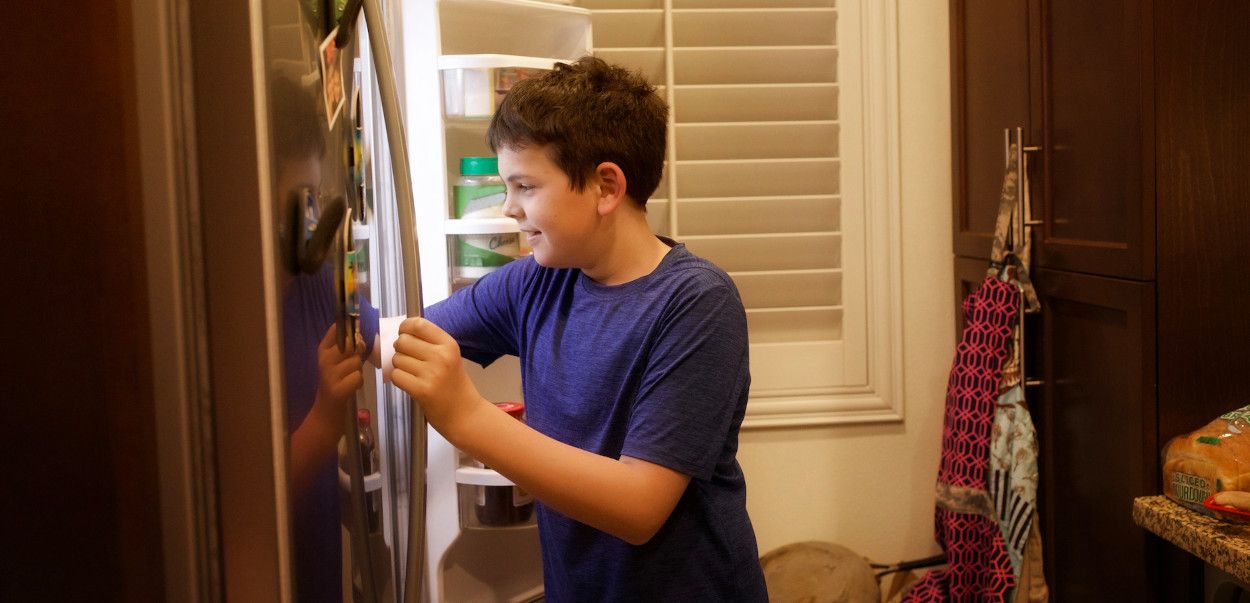It’s well-established that today’s children are more overweight than ever before. In fact, the rate of overweight kids has tripled since the 1980s and now 18% of kids ages 2-19 struggle with obesity.
As health professionals, we’re looking at many different tactics to help combat the problem. At Cincinnati Children’s, one way we’re doing this is by studying and attempting to influence kids’ dietary choices at school. Nearly 12.5 million kids rely on their schools for breakfast and 31 million buy their lunches there. That’s a lot of dining happening at school, where kids have free reign to make their own choices.
How can we help kids make good choices?
Answering that question is the basis for a recent research study we conducted. Many centers have previously studied cafeteria interventions to help kids make healthy choices at school. We wanted to do a thorough review of them to see which strategies were the most effective. To do this, we looked at 48 prior studies and drew some interesting conclusions.
The most significant and consistent: We need to make it easy for them by creating an environment that supports healthy choices. If too much mental effort is required to make a healthy choice, they won’t.
Here is a summary of the most effective approaches we found in our systematic review of cafeteria interventions. You could implement these interventions at school or at home:
Helping Kids Choose a Healthy Diet
-
Plan ahead
When kids had the opportunity to order their food online ahead of time, they made healthier choices. While not many schools have this option, it may help to talk with your kids before they go to school about what they’re going to order for lunch. In that same vein, many families find it helpful to plan meals out ahead of time for the week. We tend to make poorer decisions in the heat of the moment.
-
Make healthier foods more available
When schools made the healthier options more visible or convenient to select, it nudged them to make a better choice. This includes subtle changes such as moving apples closer to the checkout line. The same strategy can work at home. Leave fruits and veggies out on the counter at home, so they’re readily accessible.
-
Remove/limit unhealthy foods
Some schools moved the unhealthy choices out of sight, and required kids to ask for them. This naturally decreased the number of unhealthy purchases. This strategy was effective for foods like chips and chocolate milk. At home, you can get rid of the unhealthy foods, or put them up on a shelf where they won’t be seen. Out of sight, out of mind.
-
Only give them healthy choices
Kids feel empowered when they have a choice. When schools only gave their students healthy choices, like water or plain milk, they ate healthier. You can try the same tactics at home. Peas or green beans for your vegetable?
-
Provide an incentive
A few schools provided kids with small prizes, such as stickers, tattoos, or bracelets, for choosing a “power plate.” This is a lunch made up of a fruit, vegetable, plain milk and an entrée containing whole grains. Parents can do something similar by offering small incentives, or even maintaining a sticker chart, for eating healthy options at home.
-
Label it
Some schools helped children to distinguish from healthy and unhealthy foods by putting traffic light labels on them. Red for unhealthy foods; yellow for occasional foods; and green for anytime foods. This could be implemented at home with similar stickers.
-
Pack a lunch
While packed lunches weren’t a part of this review, we can conclude that parents have a lot more influence over their kids’ lunches when they come from home. Further, if they pack it themselves, they’ll be more invested in eating it. Help them to pack a healthy one by including at least three food groups: protein, a fruit or vegetable, and a whole grain. The USDA has some helpful nutrition guidelines, too.
While adult influence on child decision-making wasn’t looked at in this study, parents can encourage their children to eat more healthfully by doing so themselves. Behavioral economists call this “normative influence.” If kids see their parents eating well, kids will be more likely to make healthier choices too.
If you have concerns about your kids’ dietary habits, contact their health care provider. He or she may recommend a referral to a dietitian or a comprehensive obesity prevention program, such as our Center for Better Health and Nutrition.
Editor’s note: Robert M. Siegel, MD, FAAP, also contributed to this blog post.
To learn more about our Center for Better Health and Nutrition, please call 513-636-4305 or visit our website for more information.





